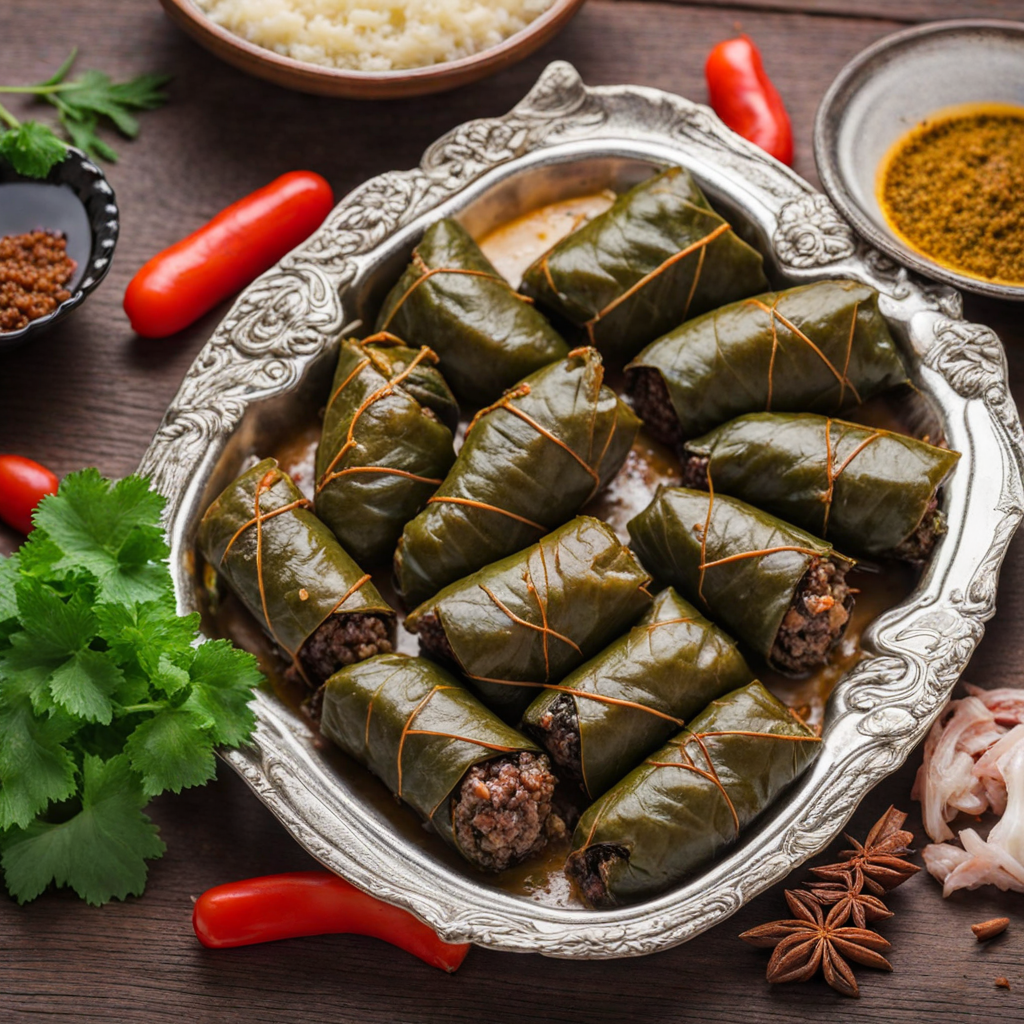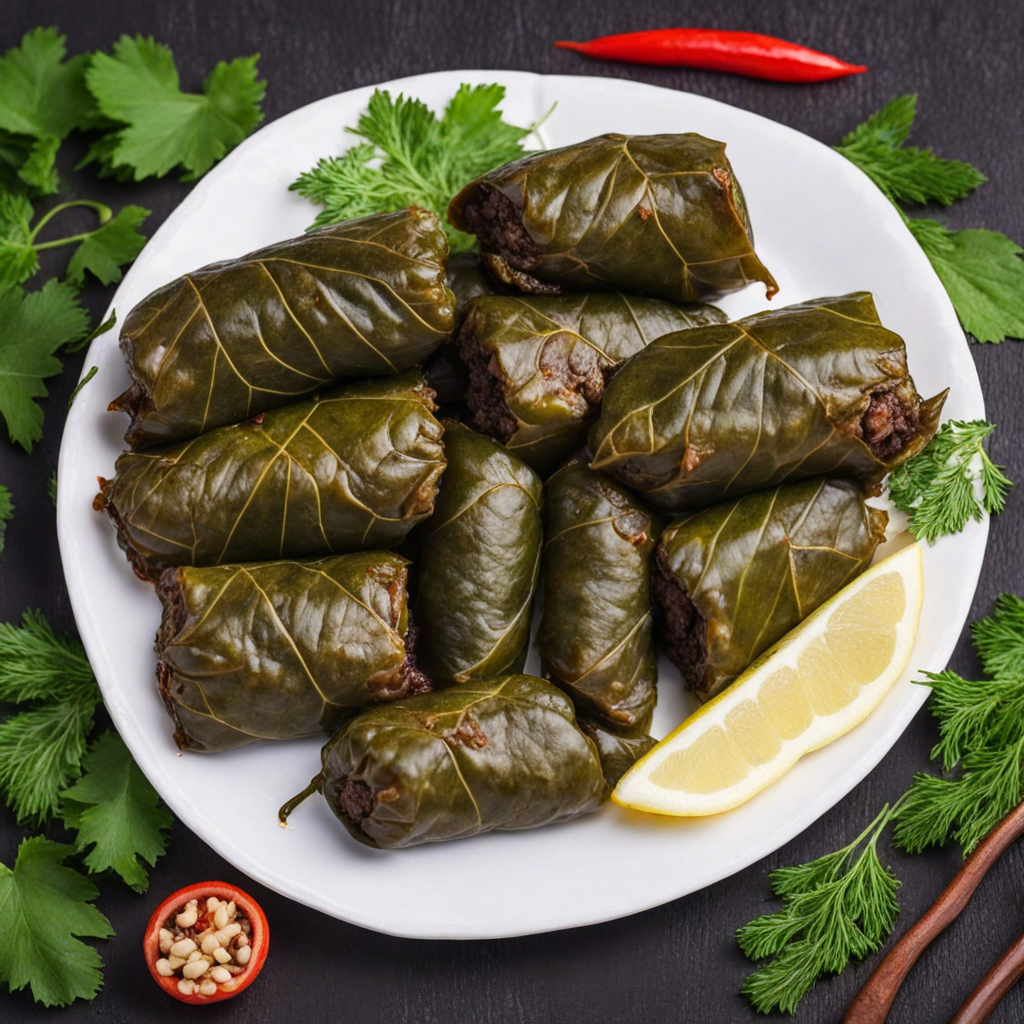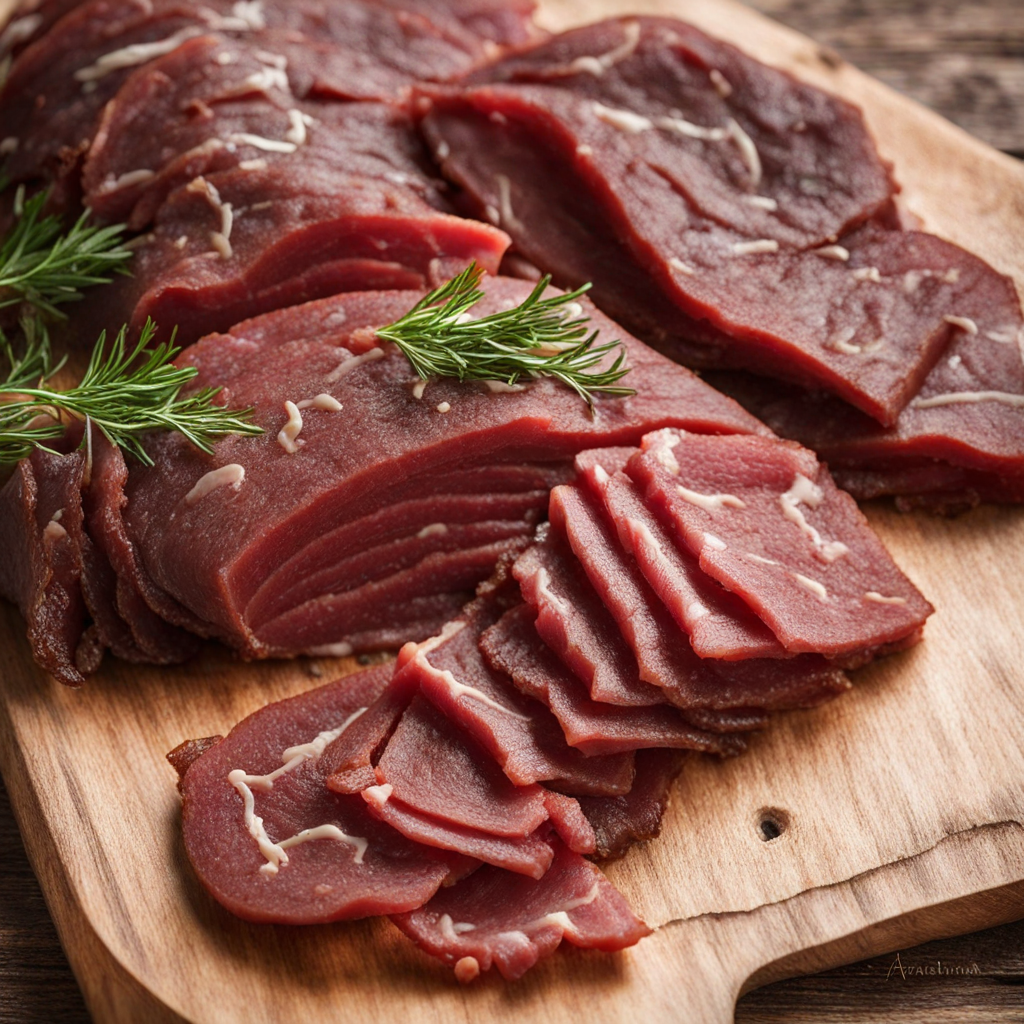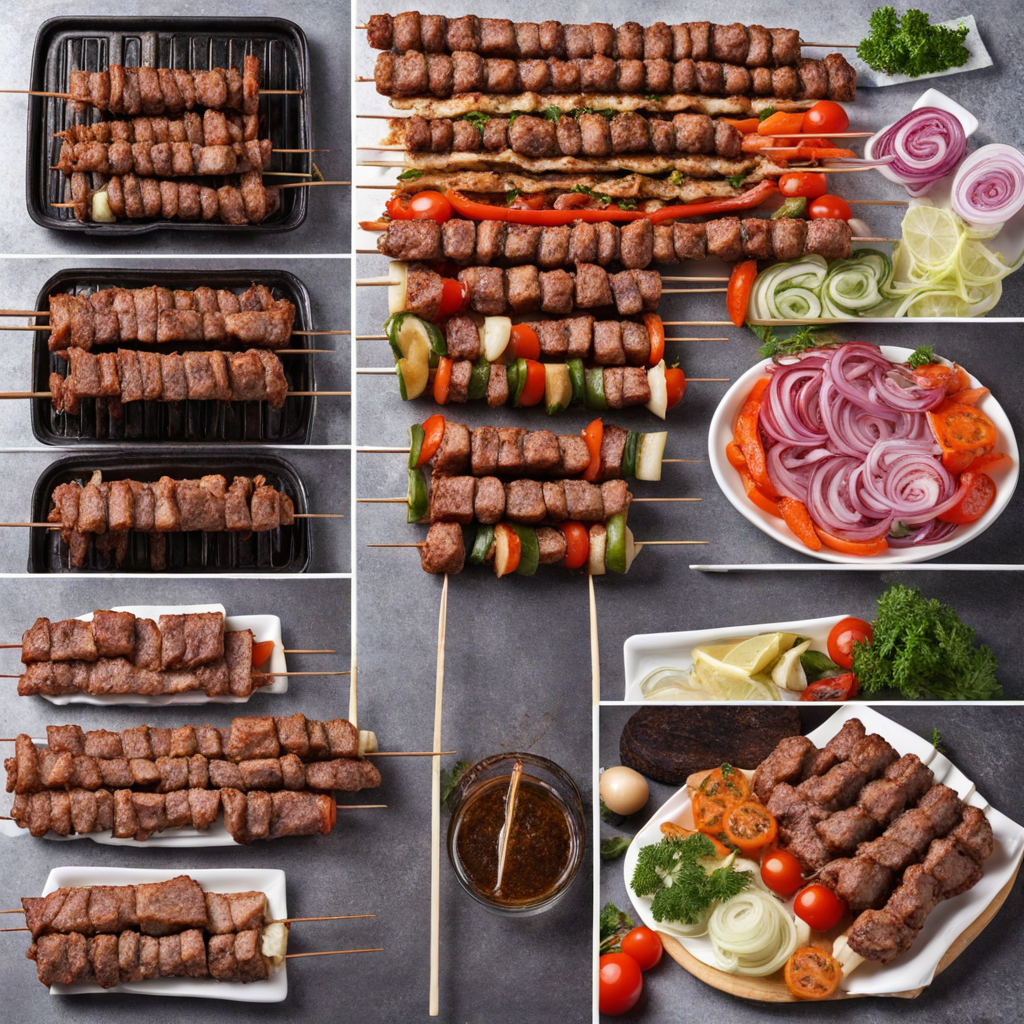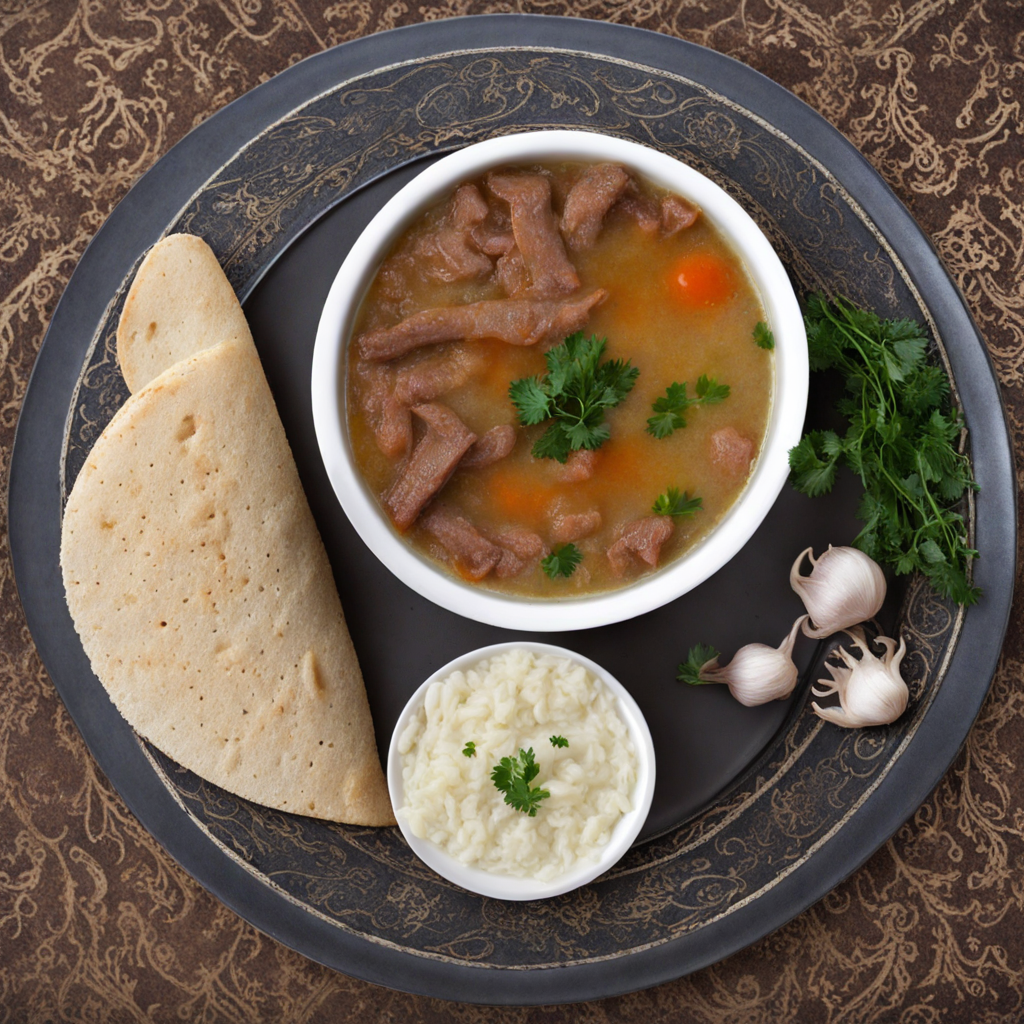Dolma
Dolma is a traditional Armenian dish that captures the essence of the country's rich culinary heritage. At its core, dolma consists of vine leaves or vegetables like peppers, eggplants, or zucchini, meticulously stuffed with a flavorful mixture of rice, minced meat (often lamb or beef), and a medley of aromatic spices. This savory filling is typically enhanced with herbs such as dill or mint, which infuse the dish with a refreshing brightness. Each bite reveals a delicate balance between the tender, tangy vine leaves and the hearty stuffing, creating a delightful textural contrast that is both satisfying and memorable. What sets Armenian dolma apart is the use of unique spices and preparation methods that reflect the region's cultural influences. The addition of ingredients like pine nuts and currants adds a subtle sweetness and crunch, elevating the overall flavor profile. Often, dolma is simmered in a rich tomato sauce or served with a dollop of tangy yogurt, which complements the dish beautifully and adds a creamy element to each mouthful. This combination of flavors and textures showcases the harmony of sweet, savory, and sour notes that is characteristic of Armenian cuisine. Dolma is not just a dish; it's a celebration of family and tradition. Often prepared for special occasions or gatherings, it invites sharing and togetherness. The process of making dolma can be a communal activity, with family members coming together to roll the vine leaves or fill the vegetables, reinforcing bonds and creating cherished memories. For anyone looking to explore new tastes, Armenian dolma offers a delicious journey into the heart of Armenian culture, with each bite telling a story of heritage and hospitality.
How It Became This Dish
Origins of Dolma Dolma, a beloved dish in Armenian cuisine, traces its roots back to the ancient civilizations of the Middle East. Its exact origins are difficult to pinpoint; however, the practice of stuffing vegetables with various fillings can be found in many cultures across the region. The word "dolma" itself is derived from the Turkish verb "dolmak," meaning "to be stuffed." This culinary tradition likely developed from the need to preserve food and make the most of available ingredients, particularly in regions where agriculture was central to society. Historically, dolma was prepared using grape leaves, a prevalent ingredient in many cultures of the Mediterranean and Near East. Grape vines were cultivated in Armenia for millennia, making their leaves a natural choice for wrapping savory fillings. The use of grape leaves also signifies a connection to the land, as they embody the agricultural practices of the region. As trade routes expanded and cultural exchanges flourished, variations of dolma began to emerge, incorporating diverse ingredients and techniques that reflected local tastes and traditions. Cultural Significance In Armenian culture, dolma is more than just a dish; it is a symbol of hospitality, family, and festivity. Traditionally, it is prepared for special occasions, gatherings, and holidays, serving as a centerpiece on the table. The preparation of dolma often involves family members working together, reinforcing bonds and cultural heritage. This communal aspect is significant, as it allows for the sharing of stories and techniques passed down through generations. Dolma is also considered a dish that embodies the spirit of sharing, not just among family but also with guests. It is common for Armenians to serve dolma to visitors as a sign of respect and warmth. The act of offering dolma carries with it an unspoken message: that guests are valued and welcomed. This practice highlights the importance of food in Armenian culture as a means of connection and celebration. Ingredients and Varieties The filling of dolma can vary widely based on regional preferences and available ingredients. In Armenia, the most traditional version includes a mixture of minced lamb or beef, rice, herbs, and spices, wrapped in tender grape leaves. Other fillings may include vegetables such as peppers, eggplants, or zucchini, stuffed with a similar mixture. Vegetarian versions, featuring rice, herbs, and sometimes nuts or dried fruits, have also gained popularity, especially among those seeking lighter fare. The choice of spices is crucial in dolma preparation, with common ingredients such as parsley, dill, mint, and allspice adding depth and flavor. The balance of spices not only enhances the dish but also reflects the Armenian palate, which appreciates bold and aromatic tastes. Additionally, the use of sour elements, such as lemon or pomegranate, adds a tangy contrast that brightens the dish and showcases the region's agricultural bounty. Regional Variations As dolma spread throughout the region, it adapted to local customs and tastes, leading to various regional interpretations. In Turkey, for instance, dolma may be made with a variety of vegetables and often includes pine nuts and currants. Greek dolmades are typically rolled grape leaves filled with a mixture of rice and herbs, sometimes served with a side of tzatziki. Similarly, in the Middle East, different cultures have developed their own versions of stuffed dishes, each bringing unique ingredients and flavors to the table. Despite these variations, the core idea of dolma remains the same: a delicious filling encased in a protective, flavorful wrapper. This adaptability has contributed to dolma's enduring popularity, allowing it to transcend cultural boundaries while remaining a staple of Armenian cuisine. Historical Context and Evolution Throughout history, dolma has been influenced by significant events and cultural changes. During the Ottoman Empire, for example, the culinary exchange between different ethnic groups led to a fusion of flavors and techniques. Armenians, as part of the empire's diverse population, contributed their own interpretations of dolma, which further enriched the dish's history. The Armenian Genocide in the early 20th century had a profound impact on the diaspora, leading to the migration of Armenians around the world. As they settled in new countries, they carried their culinary traditions, including dolma, with them. This migration not only preserved the dish but also allowed it to evolve in new contexts, adapting to local ingredients and tastes while maintaining its cultural significance. In contemporary times, dolma has found its way onto the menus of many Middle Eastern and Mediterranean restaurants globally, showcasing its appeal beyond Armenian communities. The dish has become a symbol of cultural pride for Armenians, serving as a reminder of their heritage and the resilience of their culinary traditions. Modern Interpretations and Globalization In the 21st century, dolma continues to evolve while retaining its traditional roots. Chefs and home cooks alike experiment with new fillings and presentation styles, incorporating contemporary culinary techniques. For instance, some modern interpretations may use quinoa, bulgur, or even couscous as a base for the filling, reflecting current dietary trends and preferences. The globalization of food culture has also played a role in the resurgence of interest in traditional dishes like dolma. With the rise of social media and food blogging, recipes and cooking techniques are shared and celebrated across borders. This has led to a renewed appreciation for dolma, with many people discovering its rich history and cultural significance. Furthermore, culinary festivals and events celebrating Armenian cuisine have contributed to the dish's visibility on the world stage. These gatherings allow for the sharing of recipes, stories, and cultural practices, ensuring that dolma remains a vibrant part of Armenian identity, even as it adapts to the modern culinary landscape. Conclusion Dolma is a dish that encapsulates the rich history and cultural significance of Armenian cuisine. Its origins, rooted in ancient agricultural practices, have evolved over time while remaining a symbol of family, hospitality, and tradition. As it continues to adapt and thrive in a globalized world, dolma serves as a delicious reminder of the resilience and creativity of Armenian culinary heritage.
You may like
Discover local flavors from Armenia


